From the June 2022 issue of Apollo. Preview and subscribe here.
Despite the shortness of his life, Raphael had a prodigious output – the result of his innate feeling for drawing and his ability to organise an extensive workshop. Since he had so many artists under his wing, Raphael scholarship has often been preoccupied with distinguishing the master’s contribution from those of his pupils and collaborators. Drawing on the decades of expertise of its curators David Ekserdjian and Tom Henry, no strangers to these debates, this exhibition attempts to look beyond these attributional concerns, focusing only on works widely recognised to be ‘by the master’s own hand’, to use a 16th-century expression. Freed from his associates, Raphael’s own contribution comes to the fore, largely unburdened by connoisseurial caveats and dips in quality. Left to study the master alone, one cannot be distracted from the uniquely rapid progression of his stylistic development, or his tremendous ability to reinvent himself over short periods of time, for even months or indeed weeks.
The exhibition offers a comprehensive overview of Raphael’s work, from about 1498 until his untimely death in 1520. Its unashamedly monographic approach leaves no room for works by the artists Raphael took as models – Perugino, Leonardo da Vinci and Michelangelo – but the show finds ways of illustrating how he actively responded to their works as soon as they appeared, revealing an unfailingly acute ability to recognise instantly the most advanced experimentations of the time. The shift from the appropriation of the language of Perugino, evident in the first room, to the allure of Leonardo’s Florentine works around 1505 is remarkable and sudden. This point is perfectly illustrated by Raphael’s drawing after Leonardo’s lost Leda, which inspired the delicate torsion of its contemporary St Catherine of Alexandria. Subsequently, a comparison between two tondi, the Terranuova Madonna and the Alba Madonna, shows how, within the space of few years, he made one of his first essays in a Florentine idiom look old-fashioned by reinvigorating this most Tuscan of formats with both airiness and monumentality, drawing on techniques he explored after his move to Rome in 1508.
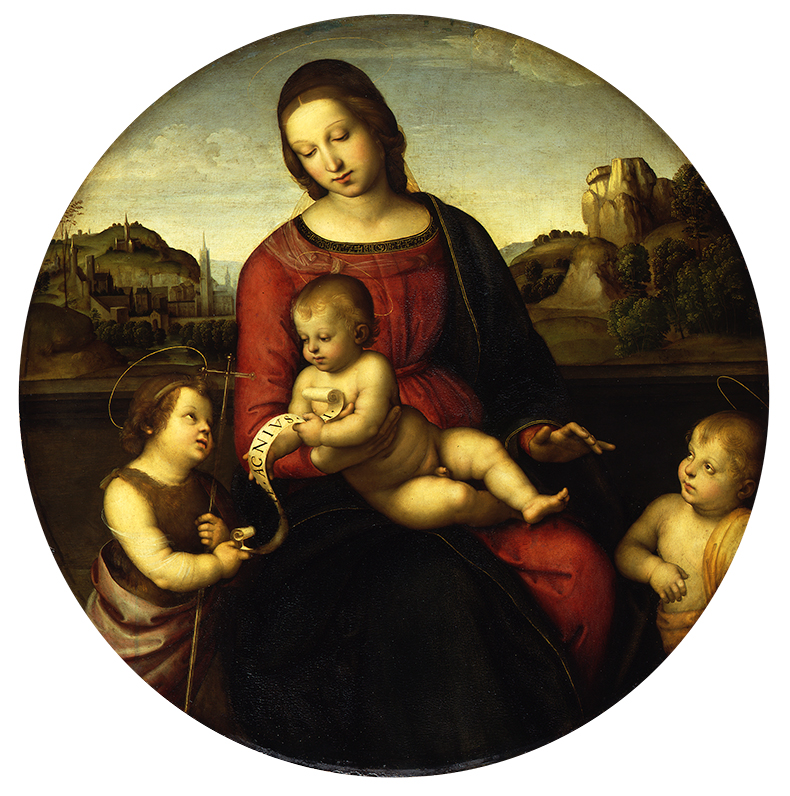
Terranuova Madonna (c. 1505), Raphael. Photo: Jörg P. Anders; courtesy Staatliche Museen zu Berlin, Gemäldegalerie
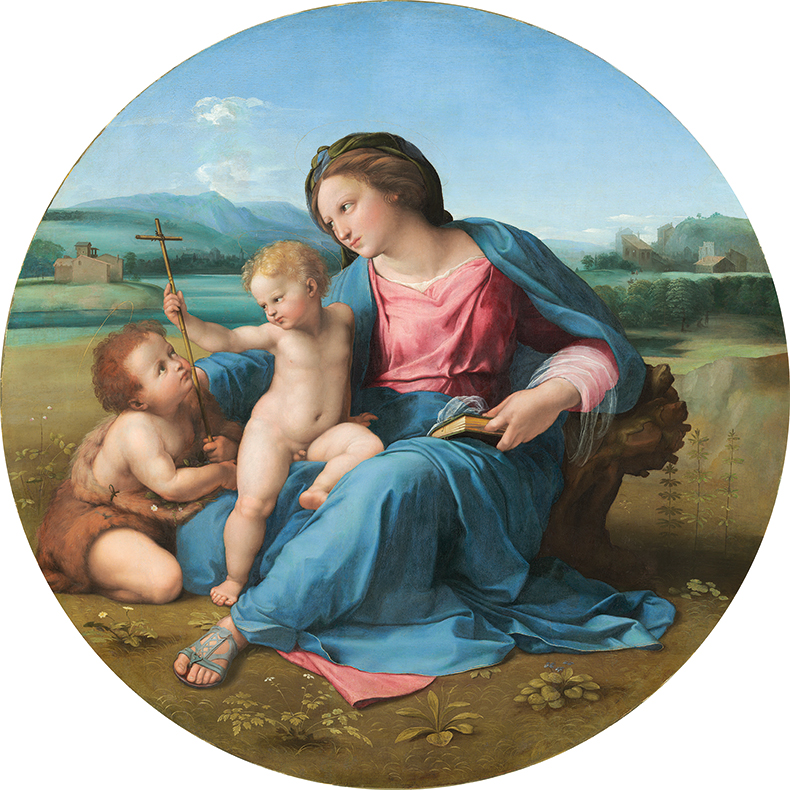
The Virgin and Child with the Infant Saint John the Baptist (The Alba Madonna; c. 1509–11), Raphael. National Gallery of Art, Washington, D.C.
Raphael was described by Giorgio Vasari as a ‘universal artist’ – and in addition to presenting Raphael as a supremely able painter, the exhibition introduces its wide public to the artist’s multifaceted interests, skills and ventures in fields as diverse as tapestry-making, architecture, printmaking, goldsmithery and even antiquarianism. To achieve such a holistic view, the display complements its chronological structure with break-out thematic sections exploring specific areas of Raphael’s production.
Tapestry is a case in point. The exceptional loan of the tapestry of St Paul Preaching in Athens from the set of the Acts of the Apostles woven for the Sistine Chapel helps the viewer to rethink conventional hierarchies of artistic media; this is helped by the presence of its related cartoon, represented by proxy through a facsimile courtesy of the art and technology experts Factum Arte. No less impressive is the juxtaposition of the small but precious Vision of Ezekiel alongside the tapestry that repurposes the same design to depict God the Father accompanied by Symbols of the Evangelists. With a vast difference in scale between the two variants – the painting is barely 40cm high, the tapestry more than 4 metres – the adaptation of the motif to such different ends shows the ease with which ideas circulated around Raphael’s shop. It is the variety of inventions and the pictorial intelligence of Raphael that impresses viewers as they discover, in room after room, the many registers of the master’s artistic excellence, whether pocket-sized pictures or larger theatrical works.
The shared language of each invention, and the means by which ideas could move from one format to another, was drawing – a constant line that connects every corner of the show. The many preparatory studies that sit alongside finished works are an invaluable guide for anyone seeking to explore the different but closely interrelated practices going on in Raphael’s studio at any one time. By doing so, the show abolishes the problematic boundary between paintings and drawings; in big monographic shows, the latter are often presented ‘boxed’ in separate rooms, with an inevitable diminution of their status, or as a separate and independent endeavour.
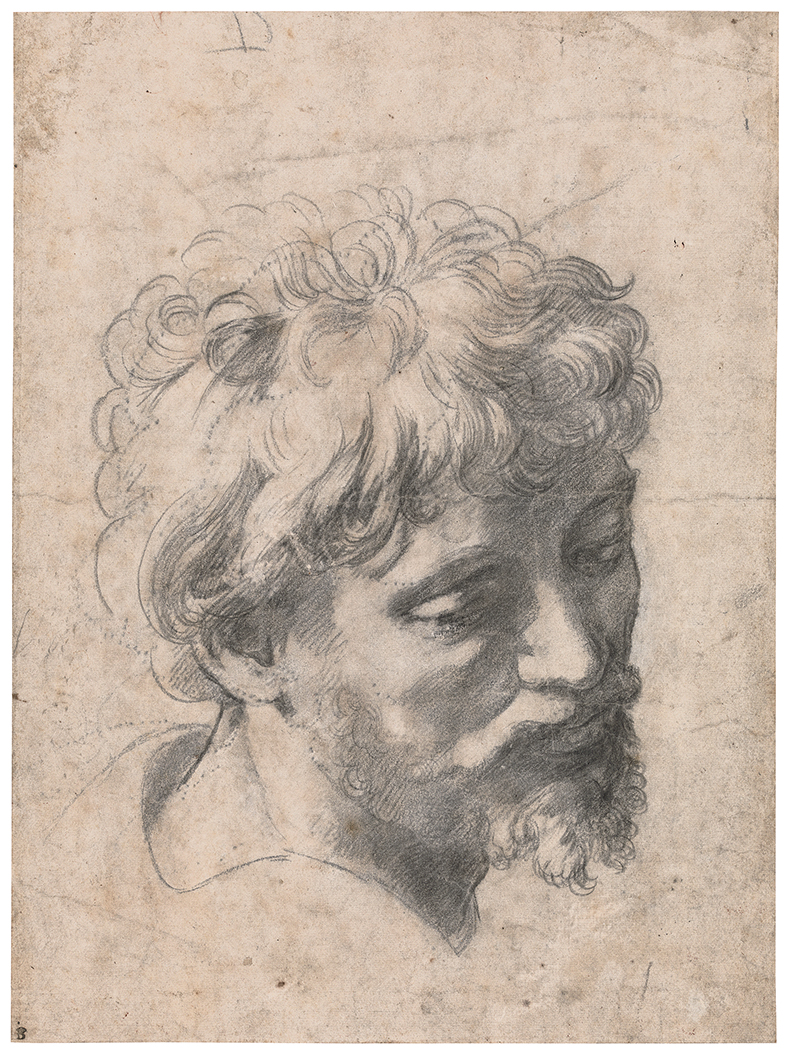
Study for the Head of an Apostle in the Transfiguration, Raphael. Private collection, New York
Such hierarchy would be misplaced with Raphael, for whom drawing was essential. From his early years, Raphael probably spent a remarkable amount of time drawing, which explains his complete command of all the graphic techniques available to him: pen, ink, black or red chalk and silverpoint, plus, possibly, the pioneering use of coloured pastels. Seldom failing to place a line correctly, Raphael designed his figures and compositions with exceptional confidence – nowhere is this verve more evident than in a wonderful silverpoint drawing for the figure of Diogenes in the School of Athens in the Stanza della Segnatura (Apostolic Palace, Vatican City). Beyond its practical value, this sheet was undoubtedly made as a virtuosic display: executing it with a technique that leaves no margin for error, Raphael was surely keen to make a statement of his abilities just after his arrival in Rome. But the perfection he so enjoyed showing off was more often than not the result of careful planning and skilful harnessing of the techniques available to him.
The resulting image of Raphael, pervading the entire show, is not so much of the epitome of perfection, but of a daring and brave artist, never content with his achievements and always thinking ahead to break new ground with a facility and flexibility that is simply extraordinary. For these reasons, the curators should be warmly congratulated, and missing this exhibition will be an irreplaceable loss for any art lover.
‘Raphael’ is at the National Gallery, London, until 31 July.
From the June 2022 issue of Apollo. Preview and subscribe here.
Unlimited access from just $16 every 3 months
Subscribe to get unlimited and exclusive access to the top art stories, interviews and exhibition reviews.


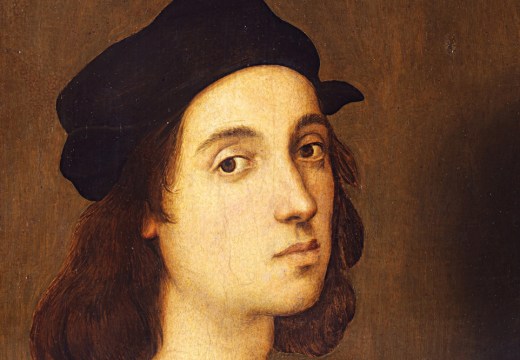
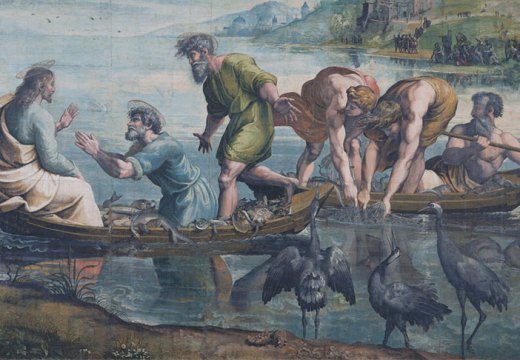
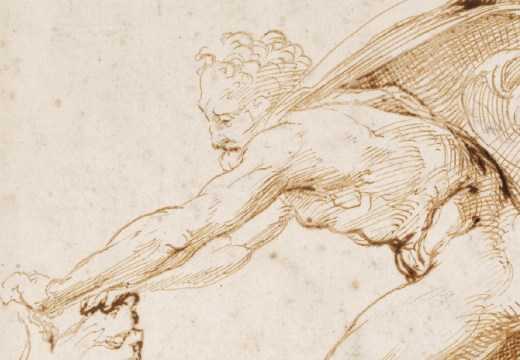









![Masterpiece [Re]discovery 2022. Photo: Ben Fisher Photography, courtesy of Masterpiece London](http://www.apollo-magazine.com/wp-content/uploads/2022/07/MPL2022_4263.jpg)
Why are fathers so absent from art history?